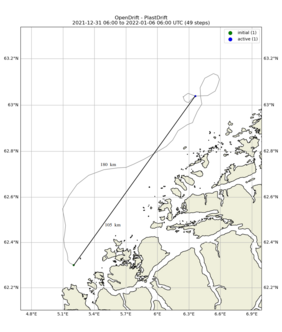"It was almost seven a clock on Friday morning, on new year's eve. MS Polarlys, one of the Hurtigruten boats, which operate on the Norwegian coastal route between Bergen and Kirkenes, was steaming from Måloy towards Torvik on the way to north. The ship was about halfway between this stretch of the route, when someone dropped something to the sea. A passenger had gone to the deck of the ship to get some fresh air, to drink some water from a plastic bottle, which then fell to the sea. Whether the bottle fell overboard accidentally or was thrown to the sea on purpose, is not known..."
This description might be true or not, we were not onboard MS Nordlys on that Friday morning to observe, whether people behaved responsibly on the deck of the ship or not. What we do know, however, is that millions of plastic bottles end up in the seas annually. The Nordic Countries have been operating a deposit system for bottles and cans for decades, which has pushed the recycling level of beverage packages to high level in these countries. In Finland, 92 % of PET-bottles were returned to return machines in 2020, and also European Union is stepping up recycling of plastic bottles: by 2029 90% of plastic bottles used in European Union should be recycled.
Majority of the plastic bottles, which end up in the seas, end up there in those countries, which do not have proper recycling or waste management systems in place. However, sometimes, the financial gain that you get from returning a used bottle to a return machine, does not lead to desired behaviour in those countries either, where these systems are in use. Stupidity takes over, common sense is put on the back burner, and a plastic bottle is thrown in to the sea. Human is a curious being and wants to see what happens to the bottle as it hits the water, but plastic bottle is durable, when compared to glass bottle. Plastic bottle won't break on impact to the sea, it will in fact outlive the thrower, a plastic bottle can live up to 450 years in marine environment. And during those 450 years the bottle can travel a long way and be an environmental nuisance in numerous locations...
The purpose of our Plastic in the Sea campaign is to raise awareness of plastic pollution of the seas. We have put together four different cases or incidents, which we will be tracking and tracing in 2022, starting now in January. Plastic litter can travel long distances, and sometimes this kind of research has been done by attaching GPS transmitters to plastic items, which have been thrown to the sea. We have taken a bit different approach to this, which delivers still similar results: simulations. Norwegian Meteorological Institute will use their Open Drift programme to simulate the journeys of our plastic litter, which we will be following here on our website. Our "Bergen" case is the first one in our focus. The attached animation shows, where the ocean currents and winds have taken the bottle during the first 6 days after it hit the water at 5.2 degrees East & 62.3 degrees North. The bottle has drifted out a bit further out to the sea and towards north east. The distance covered during these 6 days is close to 200 km. But this is only the start...
On next Friday we will present our "Thurso" incident and on 3rd of February we will find out, where has our plastic bottle traveled during the rest of January. Do the paths of the bottle and ship from which it fell to the sea cross again? Stay tuned!

